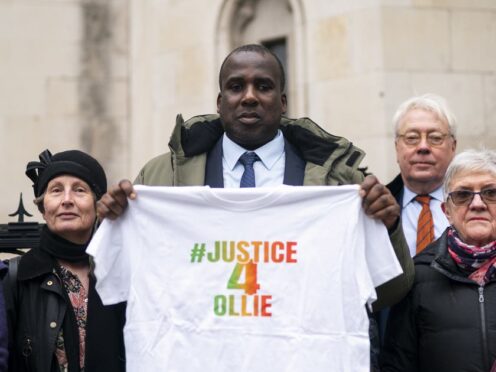
A man with learning disabilities who was jailed for life for murder in the 1990s should have his “unsafe” conviction quashed as he cannot be the person responsible, the Court of Appeal has heard.
Oliver Campbell was jailed in 1991 for the fatal shooting of Baldev Hoondle during a robbery at a shop in Hackney, east London, on July 22 1990.
The now-53-year-old’s case has been referred to the Court of Appeal by the Criminal Cases Review Commission (CCRC), a body which investigates potential miscarriages of justice, after new evidence emerged over Campbell’s “vulnerabilities”.
At the start of a two-day hearing in London, barristers for Campbell, who was released from prison in 2002, said there is a “compelling” case proving his innocence.
Michael Birnbaum KC, representing Campbell, said: “There are ample grounds on which you could find these convictions to be unsafe.
“There is no one factor here that proves innocence.
“Rather, I will seek to put before the court a combination of factors so compelling they prove that Oliver Campbell cannot be the man who shot Baldev Hoondle.”
The Crown Prosecution Service (CPS) is opposing the appeal.
Campbell suffered severe brain damage as an eight-month-old baby and continues to struggle with memory, concentration and retaining information.
Campbell was 21 when he was jailed after being convicted of murder and conspiracy to rob following a trial at the Old Bailey.
Jurors were told the gunman wore a British Knights baseball cap, which was found a few hundred yards from the scene.

Mr Birnbaum said Campbell had purchased the cap in the days before the killing, but hairs found inside it following the shooting were not his, and he was not picked out of an identity parade by Mr Hoondle’s son, despite him having come “face to face” with the gunman.
Campbell’s co-defendant at trial, Eric Samuels, who has since died, was cleared of murder but was jailed for five years after admitting robbery.
Barristers told Wednesday’s hearing that Samuels had told his solicitor Campbell was not the gunman and there is “irrefutable” evidence that he “told people over 10 years that Oliver was not with him in the robbery”.
But this was not disclosed to jurors at trial as it was deemed “inadmissible hearsay”, with Campbell’s learning difficulties meaning he was “simply unable to do justice to himself” when giving evidence.
Mr Birnbaum said: “He might well have appeared to the judge and the jury to be a liar when he was simply a mentally challenged young man who was completely out of his depth in giving evidence in front of the jury in what is probably the largest and most intimidating courtroom in the land.”
The court was told that Campbell was interviewed during the police investigation without a solicitor and officers may have “deliberately lied” to him to adduce confessions.
Mr Birnbaum later said the interviews were “disgraceful”.
Campbell’s learning difficulties meant he made admissions described as “simply absurd”, “nonsense” and containing a “litany of inconsistencies” against the facts of the case, judges heard.
Mr Birnbaum said: “The detectives were plainly convinced that, since he was the owner of the hat and had admitted a presence at the robbery, he must have been the shooter, and they were determined to get him to admit that fact.”
He added: “The reason for the nonsense of Oliver’s confession were simply because he was not there, and did not know the details of what happened.”
The court was later told that Campbell was “badgered and bullied” in police interviews, where he was “dangled with the temptation” of falsely admitting it was an accident.
Mr Birnbaum said: “(Campbell believed) his least bad option was to admit it had all been an accident, and our suggestion is that he thought he could get away with doing that.
“Unfortunately for him, and perhaps unfortunately for justice, (police) could not leave it at that. (They) had to ask questions.
“Since Oliver had not been there, all he could do was make things up and his account became increasingly divorced from the facts as we know them.”
A previous appeal against Campbell’s conviction was dismissed in 1994, with the CCRC declining to refer the case in 2005 before making the current referral in 2022.
Mr Birnbaum said that, while the CCRC had previously undertaken a “very fine and thorough investigation” into Campbell’s case, it reached the “wrong decision in deciding not to refer the case” almost two decades ago.
Lord Justice Holroyde, Mrs Justice Stacey and Mr Justice Bourne are expected to give their judgment at a later date.

Enjoy the convenience of having The Sunday Post delivered as a digital ePaper straight to your smartphone, tablet or computer.
Subscribe for only £5.49 a month and enjoy all the benefits of the printed paper as a digital replica.
Subscribe